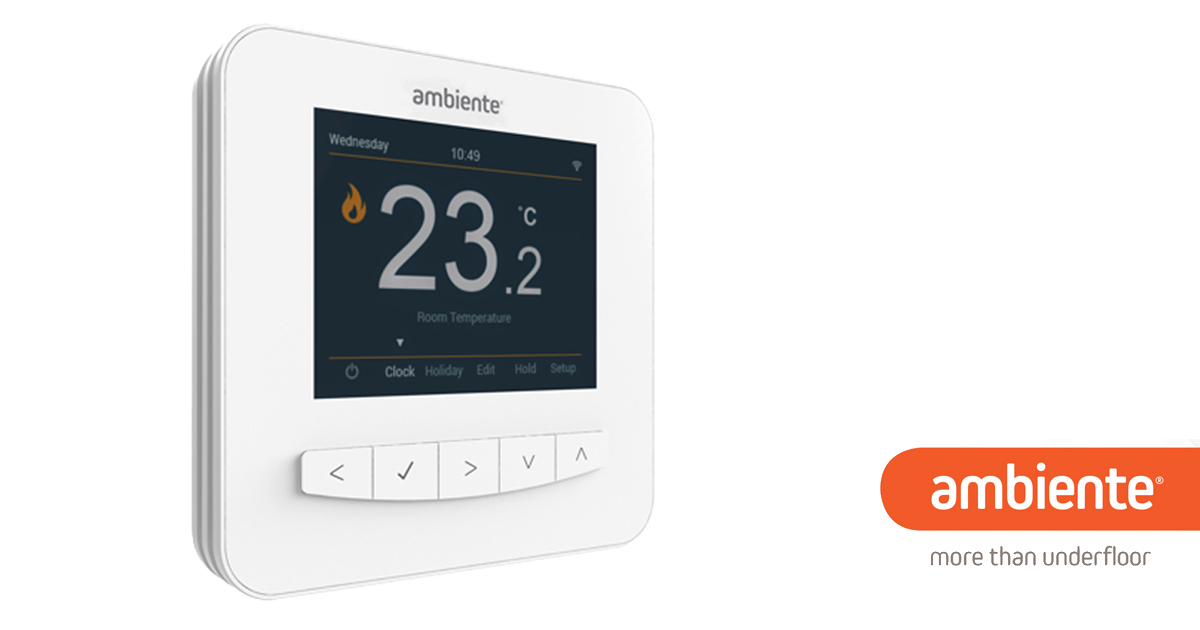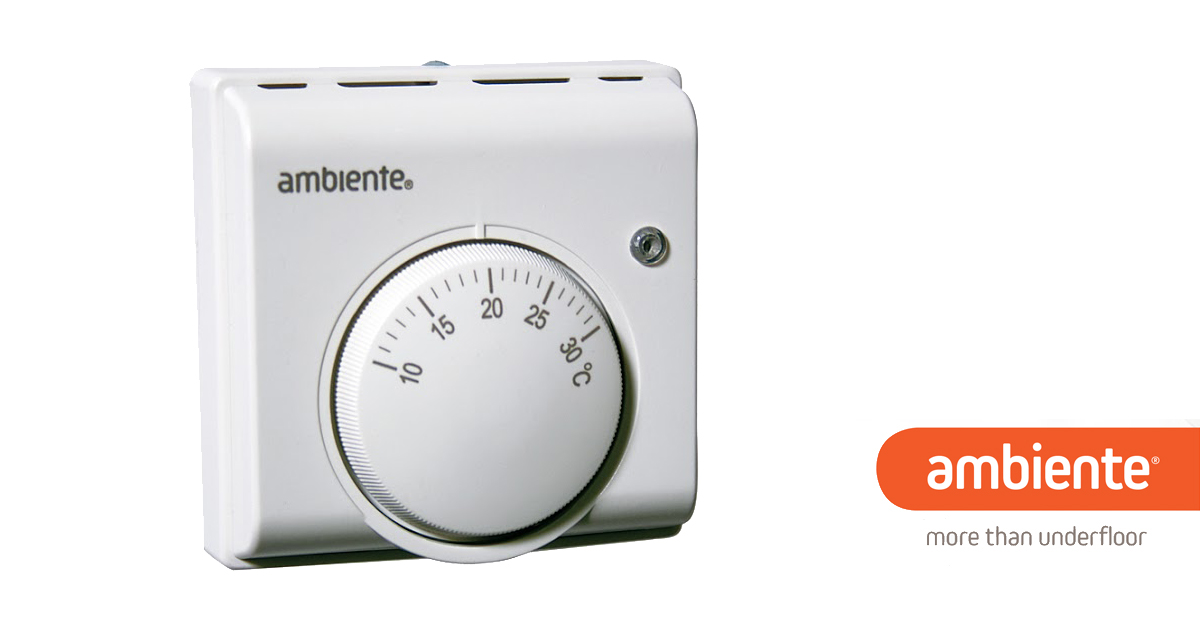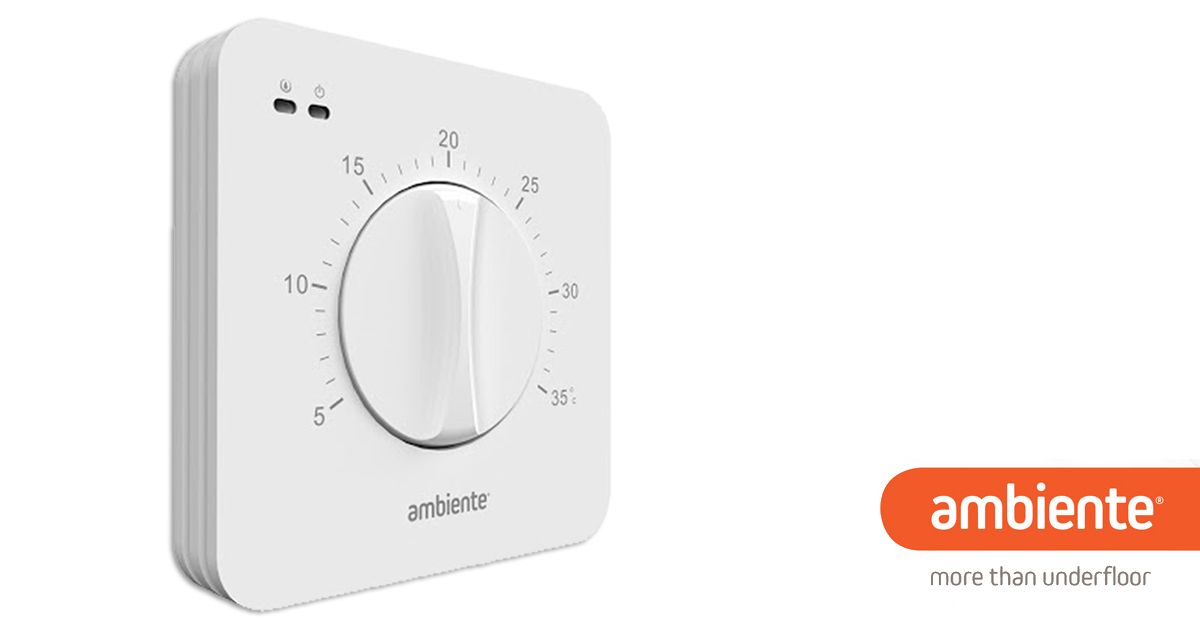Underfloor Heating Controls: Best Options For Installers
More and more people are beginning to recognise the increased benefits that underfloor heating (UFH) can offer, which has led to its huge increase in popularity over the last few years.
UFH has many advantages against other heating options like radiators such as being more energy-saving, greater design freedom and a more comfortable, even heating method.
However, one of the main advantages of UFH can also be one of the greatest problems – the control of the system. The benefit in this regard is that individual zones can be controlled separately, resulting in the perfect balance of temperature between the various zones in your home. This means that only areas needing heating are on, the other areas can be set back to a lower temperature, for greater overall efficiency.
Probably the greatest problem around the control of UFH is an understanding of how it differs from conventional heating methods i.e radiators. The main difference in terms of the heating behaviour is the length of the response time – radiators can be warm in a matter of minutes, whereas UFH within a screed floor can take an hour or more to warm up.
This means that the control of the UFH system needs to allow for this longer warm-up and cool-down time. If an area needs to be a certain temperature by a certain time, the UFH system needs to be heating up a long time in advance of this. Or, in reality, the system runs pretty much all the time, warming up slightly when the area calls for heat. Having your UFH system running all the time is not as costly as it sounds – it is much more efficient to have it running at a lower temperature all of the time than ramping up and down on heating demand.
Choosing the best UFH Thermostat
The main component for the control of UFH is the thermostat – this is situated in each heating zone, monitoring the heat in each area, and signalling more heat to be sent to the area as necessary.
It is necessary for the thermostat to be situated in the heating zone, unless a remote air sensor is used, allowing the thermostat to be hidden from view. The thermostat has a built-in air sensor to monitor the heating zone and keep it up to temperature.
Care needs to be taken in wet areas such as bathrooms, where regulations stipulate that mains-voltage devices are not to be installed within these zones. In these situations, the thermostat would be mounted outside of the bathroom, with the heating zone monitored by a remote sensor probe, installed in the floor or wall of the bathroom.
Wireless thermostat options are also available for refurbishment projects, where running new cables would be too intrusive. These thermostats run off batteries, which typically need changing every 12 months.
In some instances, a specialist BMS (Building Management System) is installed, which is typically a multi-functional control system incorporating control of the heating, cooling, lighting, audio/visual etc. In this case, we would typically just supply actuator valves for the manifold, which would be wired into the BMS interface unit.
The following section outlines the main types of UFH controls and their benefits to help you choose the appropriate thermostat for your next project.
Types of underfloor heating controls
Dial Thermostats
Although the shift in the controls market has been much more towards digital/programmable thermostats, the basic dial thermostat models still have their place. Buildings like schools, nursing homes and community centres prefer to stick with a basic dial model, for the ease of the building users.
For maximum efficiency, we would always recommend that a dial thermostat is used in conjunction with a system time clock, to ensure that the heating system is regulated and operates at required times. The standard dial thermostat has large, easy to wire terminals with built-in conductor clamps and can be mounted directly on to any wall.
More advanced than the simple dial, the night setback dial thermostat is a 230v slimline dial thermostat with optional night set-back features for more efficient operation. It is a semi-recessed thermostat, fitting into a standard single-gang backbox.
Standard dial thermostats are either on or off according to the time clock controlling the system. A set back thermostat is different. It will follow the temperature set on the dial during the timed period and will automatically reduce the set temperature by 4ºC when it’s timed to be off. This makes for a much more overall efficient operation as the system never completely cools down.
Digital Thermostats
Digital thermostats are by far the most popular choice now for underfloor heating because this control system helps the UFH operate more efficiently and offers the user more flexibility, meaning that the heating can be programmed around the lifestyle of the individual.
The Ambiente programmable room thermostat is our most popular model for the control of individual heating zones. The ability to set up the heating system to the most efficient pattern, as well as geared to the user’s lifestyle, has made this a popular choice for homeowners.
This model has 7-day programming function, with 4 time periods per day, pre-set by the user to meet their requirements. Other features include holiday mode, lock function and frost mode.
As this model can switch 16A, it is suitable for the control of both electric and hydronic/’wet’ UFH, giving installers improved diversity and range of use.
Also available in a touchscreen digital thermostat model, a digital thermostat caters for most applications. The touchscreen version of the above models allows for flush mounting, resulting in a depth of 13mm after installation.
Smart Thermostats
An advance on the digital/programmable thermostat range has been the introduction of heating controls via smartphones and other handheld devices.
Ambiente offers the Neo control system which comprises of digital/programmable thermostats that are located in each zone. There is also an option to upgrade to smartphone control via the introduction of a NeoHub unit, which plugs into your broadband router.
This system is cost-effective and simple to operate, a great alternative to a full BMS control solution and can also be incorporated as a retro-fit upgrade, providing the necessary wiring (3 core + earth cabling) is in place.
NeoStats are slim and stylish in appearance, with three stunning colours to choose from. As they’re only slightly larger than a regular light switch, these thermostats will blend into any home environment easily. All NeoStats can be controlled from anywhere, via the NeoApp which is downloadable to any smart device.
Wiring Centres
The wiring centre is the central wiring point for the control of an underfloor heating system. The wiring centre receives a signal from the thermostat in each heating zone, which in turn:
- Opens the relevant heating loop, via the relevant actuator valve(s)
- Opens the zone valve on the primary heating circuit
- Sets the local pump running, in order to circulate the water through the pipework
- Sends an ‘enable’ signal back to the boiler to activate it, if it is not already firing
Ambiente supply wiring centres for 230v, 12v and wireless systems. Some more simple systems with a single zone can be controlled without a wiring centre or individual actuator valves on each loop – the wiring can be set up from the ‘back-end’ switching on the zone valve.
Actuator Valves
Thermoelectric actuators are used for the individual control of heating circuits on an underfloor heating manifold. This is most important with multiple loops controlling different heating zones.
The valve contains a wax element, which on receipt of a signal from the thermostat (normally via a wiring control box), the valve will open, allowing the warm water to flow through the relevant pipework loop.
Ambiente actuator valves are fixed onto the manifold return bar with an M30 nut (part of the valve) and they have a visual indicator so that you can see at a glance whether the loop is open or closed. These valves are available in both 230v and 24v versions.
Case Studies
Some example projects, using the three main types of thermostats:
- Programmable Thermostats – Clifton Hill
- BMS Control – Woodside Place
Need advice on underfloor heating controls?
If you need to take control of your next UFH project, contact Ambiente today. From installation guides to product data sheets, our service helps you to understand the best products for your needs with all the additional resources to get the job done.
Get in touch with our team now on 01707 649 118 or email sales@ambienteufh.co.uk
Recommended articles for you:
An Installer’s guide to Wet Underfloor Heating Thermostat Controls?
Underfloor Heating Installation: Everything you need to know
This article was written by Robert Tuffin.
Robert is the General Manager at Ambiente and has been working in the underfloor heating industry since 2012.







